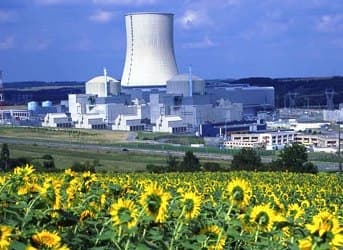On 5 May Hokkaido Electric Power shut down the No. 3 reactor at the utility's Tomari Nuclear Power Plant (NPP) in the Hokkaido village of Tomari, the last of Japan’s 54 NPPs that were still functioning after the crisis caused after the 11 March 2011 earthquake and subsequent tsunami that destroyed Tokyo Electric Power Company’s six reactor Fukushima Daiichi power complex.
According to preliminary estimates, fiscal losses from the disaster and the subsequent shuttering of the NPPs are to over $300 billion and rising.
The event is hardly insignificant, as Japan was without electricity from nuclear power for the first time in four decades.
In February, former Prime Minister Naoto Kan admitted that the Fukushima catastrophe had changed his position on nuclear power, saying in an interview, "Having experienced the 3/11 nuclear disaster, I changed my way of thinking. The biggest factor was how at one point, we faced a situation where there was a chance that people might not be able to live in the capital zone including Tokyo and would have to evacuate. If things had reached that level, not only would the public have had to face hardships but Japan's very existence would have been in peril."
As Japan’s NPPs provided roughly 30 percent of its peak electricity generating capacity, the question is now – what next?
First, it is most unlikely that Japan’s mothballed NPPs will ever be reconnected to the national grid, given the public’s increasingly strong opposition to nuclear power. As many as 70 percent of respondents to an opinion poll that the Mainichi Shimbun conducted in September 2011 called for a quick or gradual decrease in the number of NPPs.
Accordingly, in the short term, the Japanese government first needs to give the public a road map toward decreasing its reliance on nuclear plants and Tokyo needs to draft an energy policy that will not adversely affect people's daily lives and industrial activity as the nation prepares for a society without nuclear power stations. In the short term, the government will promote policies to substantially reduce electric power consumption.
But these are stopgap measures – where will the country’s new energy sources to replace nuclear come from?
Possible answer – Japan’s century-old former enemy, energy rich Russia.
On 4 May Japanese officials met with representatives from the Russian Federation’s state owned natural gas monopoly Gazprom to discuss issues, which including Gazprom ramping up liquefied natural gas (LNG) shipments to Japan, along with the possibility to construct an undersea natural gas pipeline from the company’s massive Sakhalin projects to Hokkaido, only 340 miles away.
Gazprom’s Sakhalin fields already export LNG to Japan and its Sakhalin II field alone contains more an than estimated reserves beyond 500 billion cubic meters of natural gas. Last September Gazprom inaugurated its GTS Sakhalin - Khabarovsk - Vladivostok 6 billion cubic meters of gas per year pipeline system to start natural gas deliveries in its indigenous market of Primorye.
So, eager consumer, rising producer – any problems?
Yeah, dating back to the end of World War Two. In August 1945 the Soviet Union seized the southern Kurile islands from Japan, which Tokyo since then has insisted that Moscow return before they sign a definitive peace treaty, a mere 67 years after the end of hostilities.
Well, the prospect of power shortages is nudging Tokyo to compromising on the previously sacrosanct issue. Rather than press for the unilateral return of all four contested islands, Tokyo is now floating the diplomatic trial balloon of only the Kremlin disgorging Shikotan and the Habomai archipelago instead.
Below the radar of East Asia’s prime energy news story, as China riles its neighbours over its South China Sea claims, the possible Moscow-Tokyo rapprochement has even greater potential significance, possibly leading to a peace treaty and a subsequent soaring energy trade that benefits both parties. All that’s needed is a little more flexibility and as Japanese citizens face a long, hot summer with reduced air conditioning as Gazprom chafes under China’s relentless price lowballing for its gas exports, the two sides seem to be closer than any time since 1945.
By. John C.K. Daly of Oilprice.com



















If TEPCO had been more honest with the people and not cut corners on safety then they would still be operating and planning the new designs. As it is Japan has put themselves in a very compromised situation with a traditional adversary.
The US will not be far behind if the Green progressive have their way under a second term under Obama. A 4th Gen nuclear Manhattan program needs resurrecting. Instead money has been wasted on big financials and public service jobs. Little hope in that! A change for the worse in the future!